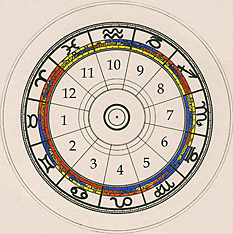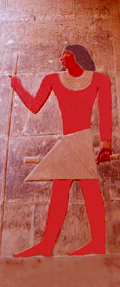Western Sidereal Astrology Is Real Astrology:
YOUR REAL ZODIAC SIGN: IS YOUR SIDEREAL SIGN:
May 15th to June 16th: Sun is in Sidereal Taurus.
June 16th to July 17th: Sun is in Sidereal Gemini.
July 17th to August 17th: Sun is in Sidereal Cancer.
August 17th to September 17th: Sun is in Sidereal Leo.
September 17th to October 17th: Sun is in Sidereal Virgo.
October 17th to November 17th: Sun is in Sidereal Libra.
November 17th to December 16th: Sun is in Sidereal Scorpio.
December 16th to January 15th: Sun is in Sidereal Sagittarius.
January 15th to February 15th: Sun is in Sidereal Capricorn.
February 15th to March 15th: Sun is in Sidereal Aquarius.
March 15th to April 15th: Sun is in Sidereal Pisces.
April 15th to May 15th: Sun is in Sidereal Aries.
HERE IS THE REASON WHY.
The Sidereal zodiac, like the more familiar Tropical zodiac (currently used by most Western astrologers), is divided into 12 equal segments of 30° each. These divisions bear the familiar names Aries, Taurus, etc. The basic difference is that the start of the Tropical zodiac zero degrees Aries (0°^) is permanently identified with the vernal equinox, while the Sidereal zodiac is measured in a way that fixes it against the starry celestial backdrop.
The boundaries of the Sidereal zodiac have been precisely determined by purely observational means, supported by INDEPENDENT archeological investigation. Because the vernal equinox is not fixed against the same celestial backdrop, the Tropical zodiac is in constant backwards motion in relation to the Sidereal zodiac (the ‘PRECESSION OF THE EQUINOXES’). As a result, ‘signs’ of the same name in these zodiacs do not presently occupy the same areas of space.
In 1944, Cyril Fagan discovered the superiority of Sidereal Solar and Lunar Returns (‘Sol- lunars’) over their Tropical counterparts. These returns, calculated in a precession-free reference frame, yield quite different results from Tropical returns. For example, the difference in the time of a Solar Return amounts to a whole day at age 72. Fagan began favoring the use of a sidereal, or non-precessing, zodiac such as Eastern astrologers have used for centuries. He felt it made more sense than continuing to use a precessing (Tropical) zodiac but deleting precession for prediction purposes. Sidereal sign-placements also began to provide solutions for many confusing problems of astrological symbolism. In this early, formative stage of Western Sidereal astrology, Fagan adopted the leading Hindu stellar zodiac, which fixes the star Spica at zero Libra 0d00’00” for all time. This zodiac differed from the contemporary Tropical zodiac by about 23° in the mid-1940s.
Donald Bradley entered the scene in the late ’40s. Then an advocate of the Tropical zodiac, Bradley undertook what was at the time the largest, most carefully-performed statistical examination of astrology’s fundamental precepts. Published in 1950 as PROFESSION & BIRTH DATE, Bradley’s study of 2492 eminent clergymen surprised him by indicating that, while twelve equal divisions of the zodiac do exist, their boundaries are not where where Tropical tradition places them. In fact, Bradley’s work suggested that, in this century, a new sign begins about where Tropicalists mark 24° of each sign, not at 0°.
This differed by 1° from Fagan’s initial speculation. Bradley pointed out that this purely empirical determination (which has since been replicated with other large data samples) carried added symbolic virtues. For instance, it placed the star Aldebaran, “the Bull’s Eye”, exactly at 15° Taurus, the “bull’s-eye” of this original first sign of the zodiac. Spica, symbolically the sheaf of wheat in Virgo’s hands, was now found at twenty-nine degrees Virgo 29°c, not zero Libra 0°d. Shortly thereafter, Fagan verified these speculations when he solved the mystery of the origin of traditional exaltation degrees (HYPSOMATA–see ZODIACS, OLD AND NEW), thereby determining to the nearest degree the boundaries of the ancient Egypto-Babylonian zodiac. Spica was officially shifted by Fagan, Bradley, and others who had by that time joined them, to 29 Virgo 00’00”.
Yet no single “fixed” star can reasonably be presumed to determine the structure of the entire zodiac. These Sidereal longitudes of Spica, Aldebaran, etc. were known to be near-approximations at best, and not precise “permanent residences” by which a zodiac is defined. Current Sidereal theorists generally presume that their zodiac is the resultant of the harmonic interplay of ALL galactic and extra-galactic material, visible and invisible. In other words, it is a ‘FIELD’ in which the relative positions of the planets produce astrological effects; a concept by no means out of alignment with progressive physics.
In 1956, a dozen years after Fagan’s initial discovery, Bradley began investigating Sidereal and Lunar Cardinal ingresses. The accuracy of his calculations was naturally dependent on the exact locations of Sidereal 0° Aries, Cancer, Libra and Capricorn. A half-degree error in these points would displace the timing of a Lunar Ingress by about an hour, or of a Solar Ingress by about 12 hours. Initially, the Solar Ingress results were quite disappointing. Sidereal Lunar Ingresses, however, were exceptionally illuminating. Bradley found that by adjusting the zero-point by only 0°06′, these Lunar Ingresses were often nearly PERFECT in their symbolic representations of of socio-political events and natural phenomena. Spica was temporarily redefined as marking 29 VIRGO 06.
These six minutes altered by about 2 1/2 hours the timing of Solar Ingresses, miraculously transforming them, like the Lunar Ingresses, into valid mundane charts. A further adjustment of only 5″ produced the most significant “polishing” improvement on this already pleasing technique. Spica was therefore re-situated at 29VIRGO06’05” for the epoch 1950.0, placing the mean longitude of the Vernal point at 05 PISCES 57’28”.64 for the same point in time.
This is the basis of the Synetic Vernal Point (S.V.P.) utilized by Western Siderealists since 1957. It is presumed to be in error by no more than a few seconds, if that much. Thus no longer are the boundaries of the 12 divisions of the Sidereal zodiac even nominally dependent on any single star with its own proper motion, but rather on A TRULY SIDEREAL MATRIX which encompasses the totality of space.
Two important corroborations deserve mention in closing. One, statistical in nature, arose from a discovery made by Bradley after his initial experiments with Sidereal Ingresses. Investigating Sidereal Lunar Capricorn Ingresses (‘CAPLUNARS’) for record rainfalls, he found that Jupiter appeared near the angles of these charts at the localities of the cloud-bursters many times more than normal expectation would allow. Further pursuit of this led to a grant from the NATIONAL SCIENCE FOUNDATION administered by New York University to continue this research and related studies. This ‘Jupiter effect’, awesomely replicated in Bradley’s larger-scale studies, naturally depends upon the correct placement of the Sidereal zodiacal boundaries, and lends considerable support to their defined locations.
The second corroboration, from archeological sources and non-astrological scholars who study the history of astrology and astronomy, was unknown to either Fagan or Bradley during their lives. In 1958 (a year after Bradley’s determination of the S.V.P.), Peter Huber published some noteworthy findings on the Babylonian zodiac. The Babylonians are acknowledged by most modern scholars as the originators of astrology. In order to determine the boundaries of the zodiac used by the Babylonians, Huber compared the calculated dates of planetary ingresses into the ‘Sidereal signs’ to the calculated dates of planetary conjunctions with certain stars, as recorded in Babylonian astronomical texts. Huber’s conclusions, published in the German journal CENTAURUS (1958, Vol. IX, pp. 192-208), were that the Babylonian zodiac, adjusted to the epoch -100, placed the Vernal Point at 4 ARIES 28 +/-20′. The Fagan-Bradley S.V.P., for the same epoch, locates the Vernal Point at 4 ARIES 27, agreeing WITHIN 1′ of ARC!



It is good to see there are a few more of us WSAs out there. I am out of the San Francisco School. Most of the others I know are out of the Southern California school and ROSA.
The only others I know to be active, other then Jim Eshelman are Ken Bowser in Minneapolis and Jack Contreras, here in San Francisco.
Bert W. Fannin
Western Sidereal Astrologer
Location and Timing Astrology
The sidereal solar astrology justify the sidereal astrology, when you confront the difference to people, 99% agree.
Why did we go wrong? was it the illusion of the age of the rulership of Neptun ?
Thomas P. Apath
Western Sidereal Astrologer (self-taught since 1969)
assitance in developing
I don’t understand how Constellations that have different sizes and positions in the sky could being limited by signs with 30 degrees and Lunar Mansions with 13,20degrees .
Please, clarify my doubt.
Regards
Coelho
Along with Bert Fannin I also attended the SF School of Sidereal Astrology.
And I am still actively researching and doing readings.
There’s only a few Sidereal Astrologers still active and unfortunately few if any new students.
Wish you well with this interesting website.
Michael Viele
Western Sidereal Astrologer
P.S. Coelho For astrological purposes the Sidereal Zodiac is divided up into 12 equal constellations of 30 deg. each (12×30=360) The Sidereal Zodiac therefore varies somewhat from the true astronomical zodiac.